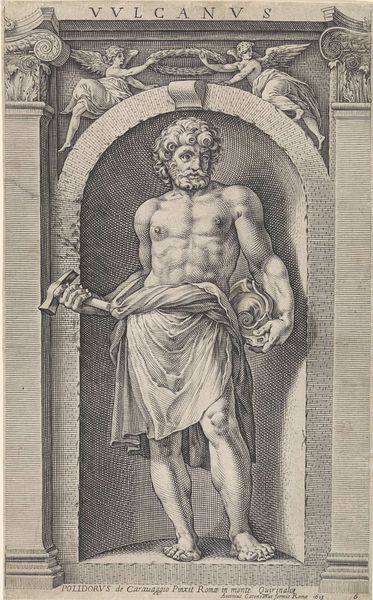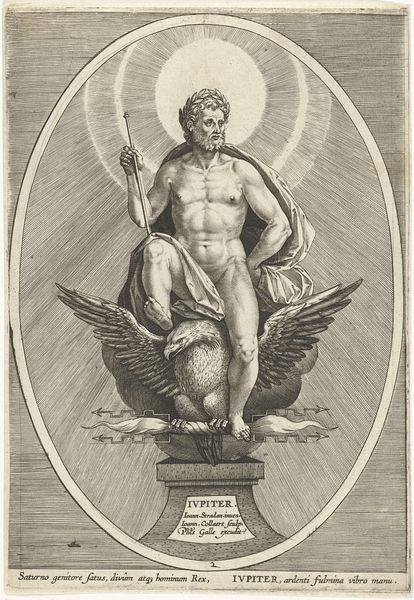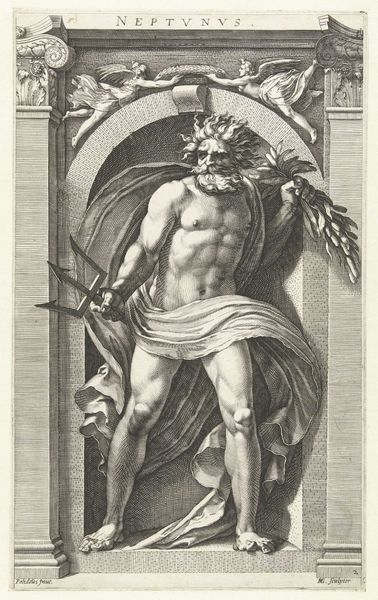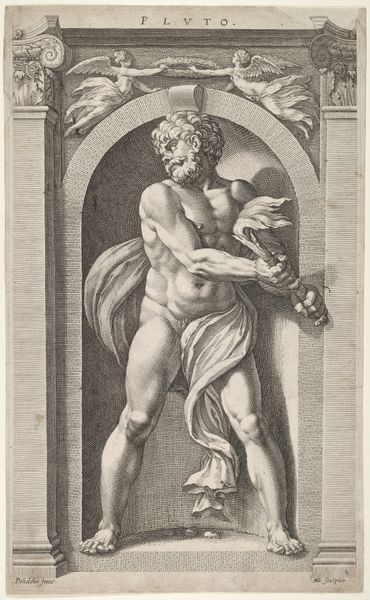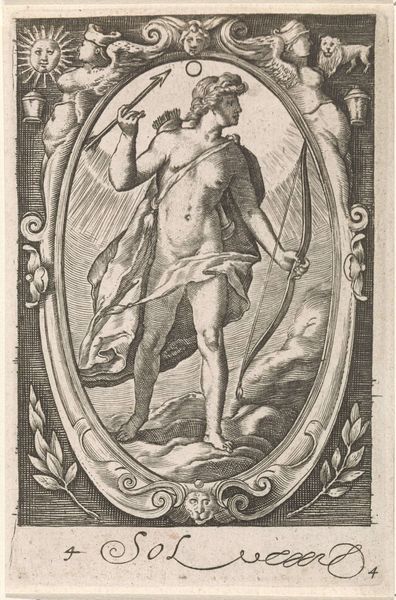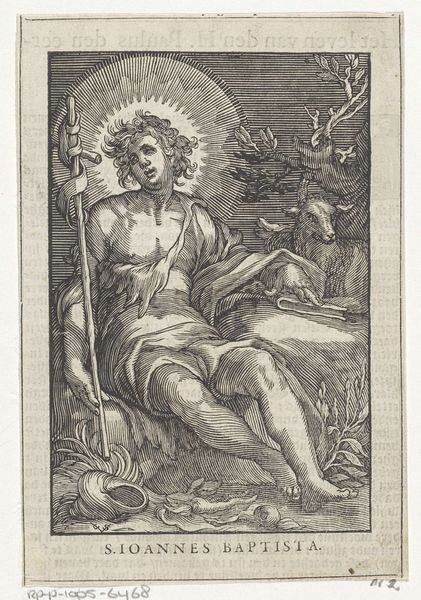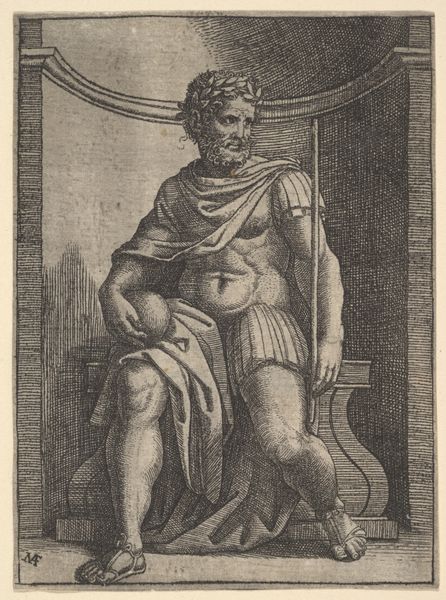
print, engraving
#
pencil drawn
#
baroque
# print
#
figuration
#
history-painting
#
engraving
Dimensions: 355 mm (height) x 211 mm (width) (bladmaal)
Editor: This engraving, “Jupiter,” from 1592, is by Hendrick Goltzius. The god is shown in almost a sculptural form, enthroned within an alcove and accompanied by his eagle. I'm struck by the intense gaze, but there's a certain stillness too, in the neat hatching that creates these values. How do you interpret this work and the image of Jupiter it presents? Curator: It's a fascinating portrayal, isn't it? The image immediately calls forth millennia of associations tied to Jupiter, the king of gods. Goltzius is tapping into a deep well of cultural memory here. Consider the eagle; a powerful symbol of dominion. Jupiter, of course, isn’t just power. What else do you see in the composition, or how does it contrast with other Jupiters you've encountered? Editor: I guess the contrast to how all-powerful he’s meant to be. The hatching technique seems delicate somehow. Plus the way he’s literally framed and contained feels a bit contradictory, and even fragile for a supposedly eternal being. Curator: That "fragility" may speak to the anxieties of Goltzius’ time. The Reformation had challenged old hierarchies; even divine authority wasn’t unquestioned anymore. What emotional resonance might the image hold for viewers navigating those shifts in power, then? Editor: So maybe that sense of being framed is deliberate, indicating the questioning of authority in general. It becomes more about how humans perceive power, than raw divinity. I hadn't thought about it like that. Curator: Exactly! The enduring symbols and shifting emotional weight given to them across centuries… that's often where the real art lies. Thanks, this was insightful for me as well!
Comments
No comments
Be the first to comment and join the conversation on the ultimate creative platform.

